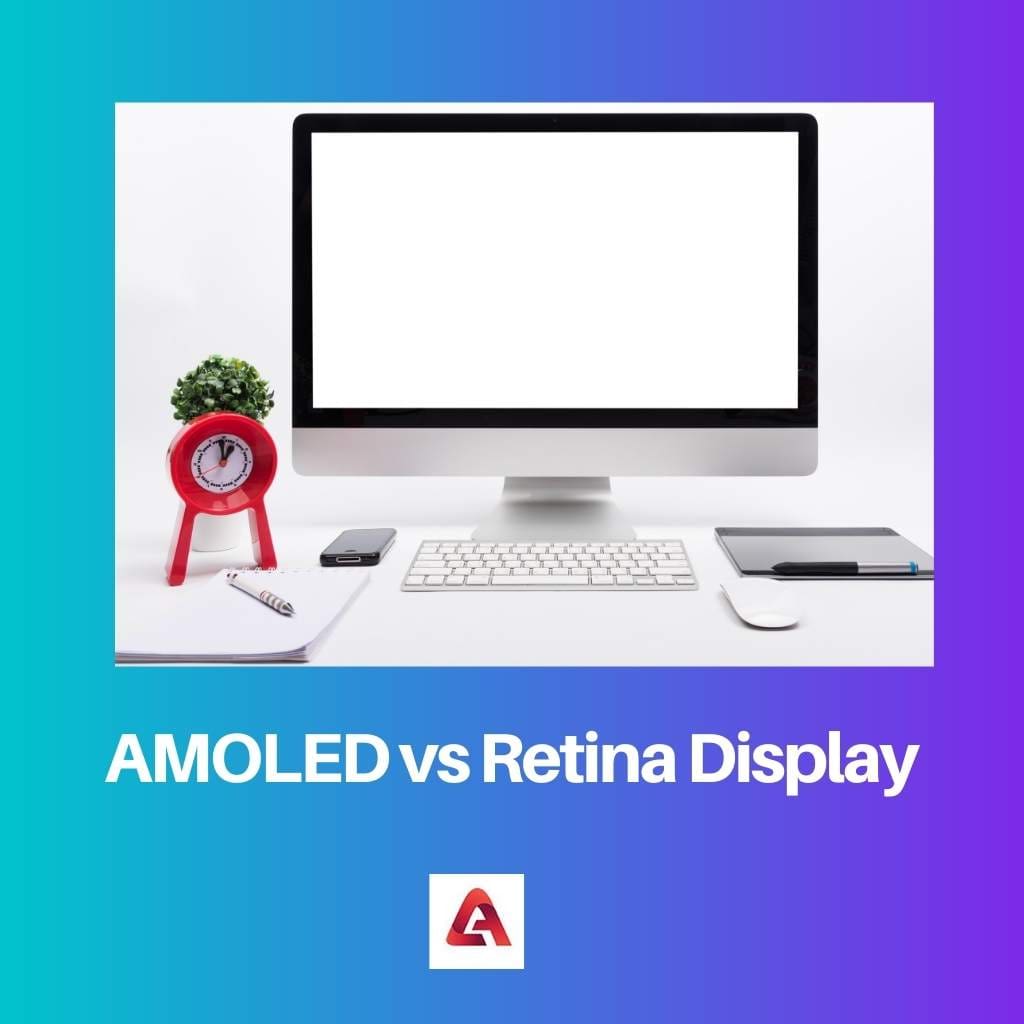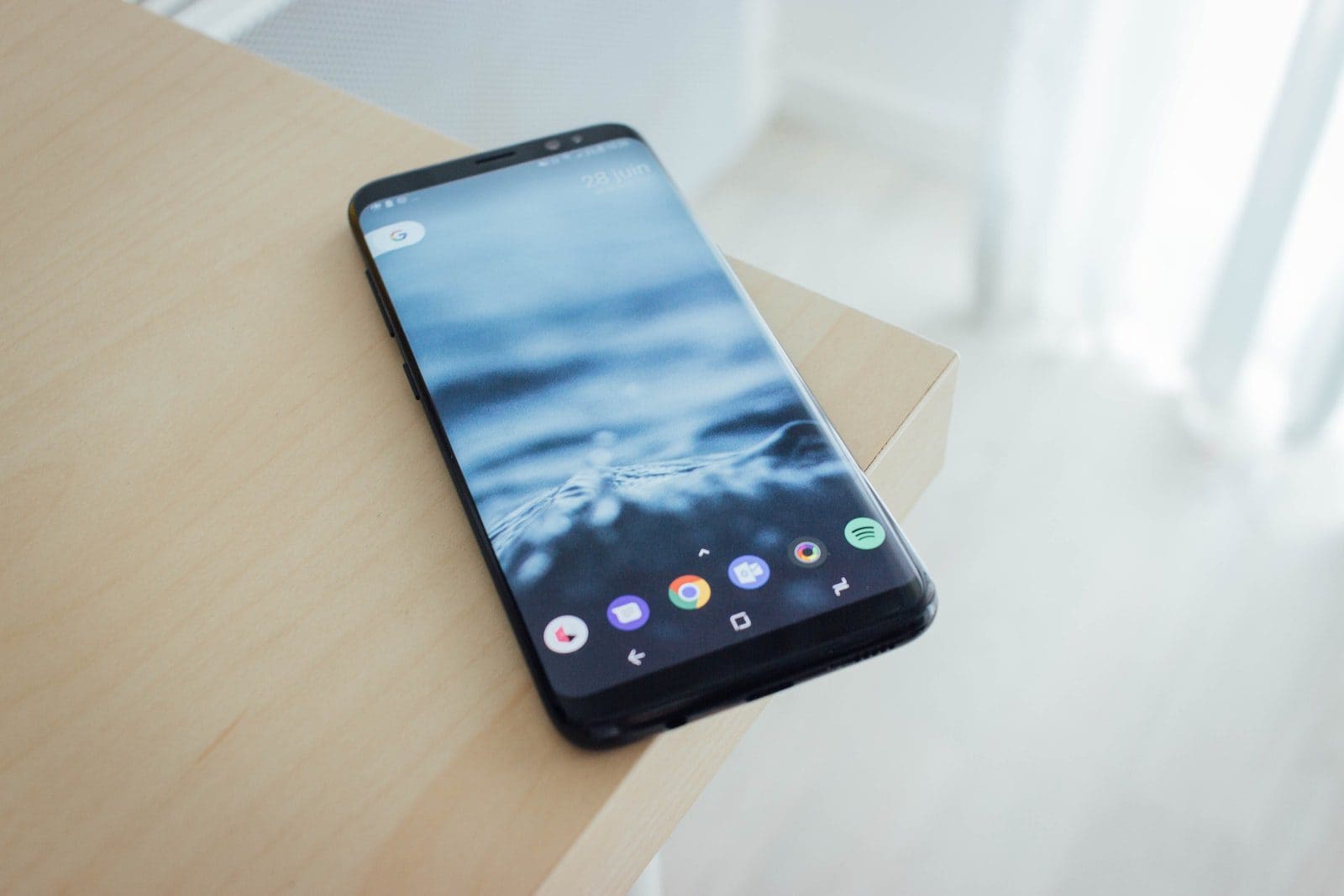So many types of displays are available in designing the latest technologies today. From LCD screens to AMOLED, our world has undergone many changes and has versatile development in science and technology.
LCD, AMOLED, and OLED are all different displays that are seen today. Two such displays, just like them, are the AMOLED and retina display.
Key Takeaways
- AMOLED (Active Matrix Organic Light Emitting Diode) is a display technology that uses organic compounds to create vibrant colors and deep blacks.s
- Retina Display is a marketing term Apple uses to describe displays with high pixel density, resulting in sharp and detailed images.
- AMOLED displays consume less power and offer better contrast, while Retina Displays are known for their high resolution and pixel density.
AMOLED vs Retina Display
AMOLED (Active Matrix Organic Light Emitting Diode) is a display technology used in modern electronic devices such as smartphones, televisions, and smartwatches. Retina display is a display technology developed by Apple for its products, such as iPhones and refers to the display’s pixel density.

The abbreviation AMOLED refers to Active Matrix Organic Light-Emitting Diode. This is a display that is very thin by the surface where a kind of organic material is used for making the display for current passing through it.
This current helps to emit light. In an AMOLED display, there are pixels attached to every individual pixel for electrification.
The pixel density of a retina display is about 300 pi. The Retina display is the standard display used in all Apple products, right from an iwatch to an iPad.
This is proven to give the highest and best resolution of all the other displays. This is also used in some other phone devices, such as Samsung.
Comparison Table
| Parameters of Comparison | AMOLED | Retina Display |
|---|---|---|
| Screen-type used | This type of display makes use of LED. | This type of display makes use of the LCDs. |
| Resolution | This has a low resolution. | This has the highest resolution. |
| Contrast | This display helps in providing a better contrast in showing back color when compared to the Retina Display. | This display provides a lower contrast in showing back color when compared to AMOLED. |
| Legitability | This is observed to have a Low amount of legibility when it is under direct sunlight. | This is observed to have a high amount of legibility when it is under direct sunlight. |
| Efficiency | This is more power-efficient when compared to the retina display. | This is less efficient when compared to AMOLED. |
What is AMOLED?
The abbreviation AMOLED refers to Active Matrix Organic Light-Emitting Diode. This is a display that is very thin by the surface where a kind of organic material is used for making the display for current passing through it.
This current helps to emit light. In an AMOLED display, pixels are attached to every pixel for electrification.
This has an amazing feature that lets a person show black colors well on the screen. This display has the highest refresh rate. The LED, which AMOLED uses, makes use of each pixel to give light. There is light produced from each LED without needing any backlight.
This is a unique feature that exists in AMOLED display which helps it save more amount of power through the individual LEDs. These LEDs will instantly turn off when black is to be shown on the screen.
The black will always show with the backlight being on. The AMOLED display, which is used by Apple, is said to have a very high resolution that cannot be determined through the human eye.

What is Retina Display?
The pixel density of a retina display is about 300 pi. The Retina display is the standard display used in all Apple products, right from an iwatch to an iPad.
This is proven to give the highest and best resolution of all the other displays. This is also used in some other phone devices, such as Samsung.
The Samsung S7 Edge had a higher pi than Apple used for all its products, making them question their 300 pi display. After a lot of thinking, the Apple company came up with its iPhone 6 with a 401 pi of its retina display.
Multiple attachments can be done in a retina display in just one pixel per inch.
The consumption of power decreases when the retina display makes the LEDs off to display the black color. Where there is a case of reflecting sunlight, the retina display is a sure win to be set as a display compared to any other available display.
In short, the retina display is a bit costly but is worth the cost.

Main Differences Between AMOLED and Retina Display
- The AMOLED display makes use of the LEDs, and on the other hand, the Retina display makes use of the LCDs.
- The AMOLED display has a lower resolution, and on the other hand, the retina display has a higher resolution.
- The AMOLED helps in providing a better contrast in showing back color when compared to the Retina Display, and on the other hand, the retina display provides a lower contrast in showing back color when compared to AMOLED.
- There is a Low amount of legibility when it is under direct sunlight in AMOLED, and on the other hand, there is a high amount of legibility when it is under direct sunlight in retina display.
- AMOLED displays are proven to be more power-efficient when compared to the retina display, and on the other hand, the Retina display is proven to be less efficient when compared to AMOLED.

- https://books.google.com/books?hl=en&lr=&id=c_x0DwAAQBAJ&oi=fnd&pg=PA231&dq=amoled+vs+retina+display&ots=UchAkHFlO9&sig=S-216R8-_ScyETpv8wr3nDuCp6U
- https://www.osapublishing.org/abstract.cfm?uri=jdt-12-2-158

The comparison table is particularly useful in illustrating the differences between AMOLED and Retina Display. It’s great to have this information presented clearly.
The section on AMOLED and Retina Display is highly educational and illuminating. It’s great to have such detailed insights into these display technologies.
The descriptions of AMOLED and Retina Display are clear and well-organized. This article is a valuable resource for understanding the differences between these technologies.
I found the explanations of the AMOLED and Retina Display technologies to be very insightful. It’s interesting to learn about the technical aspects of these displays.
This article provides a well-researched and thorough explanation of the AMOLED and Retina Display technologies. It’s evident that a lot of expertise went into writing this.
The explanation of AMOLED and Retina Display technologies is very informative. It’s interesting to learn about the pixel density and resolution differences between the two.
I appreciate the detailed breakdown of how AMOLED and Retina Display work. Understanding the science behind these technologies is fascinating.
Thank you for the detailed comparison between AMOLED and Retina Display. It’s really helpful to understand the different features and capabilities of each display technology.
I agree, Carmen98. This article provides a comprehensive overview of the two display technologies.
The information about the power efficiency and contrast levels of AMOLED and Retina Display is enlightening. It’s clear how each technology has its unique advantages.
The information provided about AMOLED and Retina Display is incredibly detailed and comprehensive. It’s clear that a lot of expertise went into creating this article.